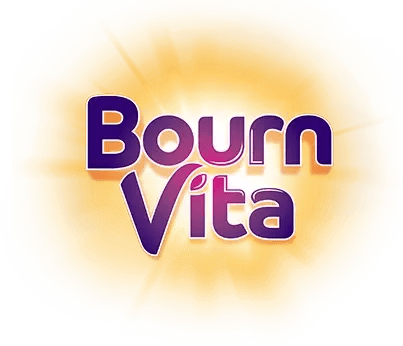- The Sun Is a Big Ball of Fire
- One Day on Venus Is Longer Than Its Year
- Neutron Stars Are Super Heavy and Tiny
- Saturn Has Over 140 Moons
- A Planet Made of Diamond
- Astronauts Grow Taller in Space
- The Moon Has Earthquakes—Moonquakes!
- Jupiter’s Storm Is Bigger Than Earth
- Some Stars Explode into Supernovas
Introduction

Space is full of secrets, surprises, and wonders that will spark any curious kid’s imagination. From stars that shine for millions of years to planets with rings made of ice and dust, there’s so much to explore. For school kids who love to ask questions and dream big, learning about space can be cool and inspiring.
Learning about how planets move, what stars are made of, or how astronauts live in space helps kids connect with science in a fun and engaging way. These facts teach something new and encourage young minds to think beyond Earth. Whether it’s walking on the Moon or spotting a shooting star, space has a magic that keeps curiosity alive.
Introduce kids to space early, and they’ll develop a love of science, technology, and discovery. It can also lead to bigger dreams, like being an astronaut, engineer or space explorer. The best bit is that space facts are often surprising and easy to understand so perfect for classroom fun, bedtime chats, or school projects.
Let these amazing facts take your child on a journey beyond the clouds – into galaxies far, far away.
9 Awesome Space Facts to Get School Kids Excited About the Universe

The universe is full of cool things that can make kids think big, ask questions and dream about distant galaxies. Whether you’re looking up at the stars or reading about astronauts, space has something awesome to offer. From burning stars to gas planets, each fact reveals something amazing about our universe. For school kids who are curious about what’s out there, these facts are not only fun but also build interest in science and learning.
So get ready to explore space with your imagination—because the universe is bigger, cooler, and more awesome than you think!
The Sun Is a Big Ball of Fire
You see the Sun every day, but did you know it’s actually a star? According to NASA, it is the closest star to Earth and bigger than all the planets combined. The Sun provides us with heat and light, and is the reason Earth experiences day and night, seasons, and weather. Without the Sun, life on Earth wouldn’t be possible. It burns at over 5,500 degrees Celsius and is made mostly of hydrogen and helium.
One Day on Venus Is Longer Than Its Year
As per NASA, Venus spins so slowly on its axis that it takes about 243 Earth days to complete one rotation. But it orbits the Sun in just 225 Earth days, so a day on Venus (one full spin) is longer than its year (one trip around the Sun).
Neutron Stars Are Super Heavy and Tiny
According to ISRO, after a massive star explodes, it can become a neutron star. These are one of the densest things in space. They’re only about 20 kilometers wide but are incredibly heavy because all their mass is packed together. If you could scoop just a spoonful of it, it would be heavier than all the cars on Earth combined!
Saturn Has Over 140 Moons
As per the research done by ISRO, Saturn’s beautiful rings get all the attention, but the planet has over 140 moons. Some are big like Titan, which is bigger than our moon and has thick clouds. Others are small and icy. They orbit Saturn like bees around a hive, and scientists are still finding more.
A Planet Made of Diamond
According to research done by NASA, scientists found a planet called 55 Cancri e that’s thought to be carbon-rich. Due to the high pressure and heat, this carbon could potentially be converted into diamond. So parts of the planet might actually sparkle! It’s more than twice the size of Earth and 40 light years away.
Astronauts Grow Taller in Space
As per a study conducted by NASA, in space, there’s no gravity to compress your body. So astronauts on the International Space Station actually grow a few centimeters taller while they’re in orbit. But it’s temporary; once they get back to Earth, they shrink back to normal. Still, it’s a fun space fact to think about!
The Moon Has Earthquakes—Moonquakes!
Research by NASA states that moonquakes happen deep inside the Moon and can last up to 10 minutes. They’re caused by tidal forces and sometimes by meteorite impacts. Scientists study moonquakes to learn more about what’s inside the Moon and how it behaves. The Apollo astronauts even left sensors on the Moon to detect them.
Jupiter’s Storm Is Bigger Than Earth
As per a study done by NASA, the Great Red Spot on Jupiter is a huge storm system bigger than our whole planet. It’s been going for over 300 years. Scientists think it’s a hurricane, but much more powerful. You can even see it through a telescope as a red oval on the planet.
Some Stars Explode into Supernovas
A study conducted by NASA suggests that a supernova is one of the most significant phenomena in space. When a big star runs out of fuel, it can explode and shine brighter than a whole galaxy for a short time. These explosions send out iron and carbon, which later form new stars, planets, and even life.
Conclusion

These fascinating space facts are just a tiny peek into the mysteries of the universe. They spark curiosity, inspire dreams, and remind you how much more there is to discover beyond our world. So the next time you look up at the night sky, remember, you’re looking at a universe full of secrets waiting to be explored!
Her love for storytelling began with reading her grandfather’s speeches, where Tarishi saw the power of words in creating lasting memories. Combining her passions for food and writing, she has turned her life into a fulfilling path of sharing stories that celebrate flavours and how food brings communities together.
The views expressed are that of the expert alone.
The information provided in this content is for informational purposes only and should not be considered a substitute for professional medical advice, diagnosis, or treatment. Always seek the advice of your physician or another qualified healthcare provider before making any significant changes to your diet, exercise, or medication routines.
References
https://spaceplace.nasa.gov/supernova/en/
https://www.nasa.gov/image-article/jupiters-great-red-spot-2/
https://science.nasa.gov/moon/moonquakes/
https://www.nasa.gov/wp-content/uploads/2018/05/whatisyourspaceheight.pdf
https://science.nasa.gov/exoplanet-catalog/55-cancri-e/
https://www.isro.gov.in/UnionCabinetApprovesIndiasMission.html
https://www.isro.gov.in/ISRO_EN/GravitationalWaveAstronomy.html
















